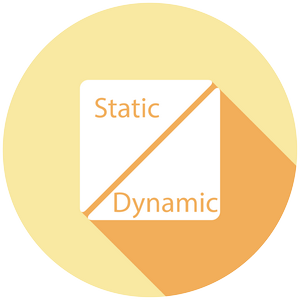Why Dynamic Brands Might Need an Animated Logo
Relevant topics Archive, Advertising
Logo animation used to be hot. Over the last couple of years, companies have decided to back away from logo animation, and remove gradients and fillings. You’ve probably seen the logo evolutions of companies like Coca Cola, Pepsi and Shell – who all trimmed down the logo to the mere essentials.
 But, these companies all have a different branding, a different identity. Yet, the most important differentiation, the logo, is starting to look more and more alike. New research by two Boston College marketing professors says the low usage of animated logos means there's a "first-mover" opportunity for some companies.
But, these companies all have a different branding, a different identity. Yet, the most important differentiation, the logo, is starting to look more and more alike. New research by two Boston College marketing professors says the low usage of animated logos means there's a "first-mover" opportunity for some companies.
When the Pixar lamp buries the letter "I" by jumping on it, this is an example of what's called "agent animation" - self-directed motion of a brand logo that makes it feel alive. When you’re about to watch a Universal Studios movie, you’ll see an animation of the earth with the Universal Studios logo sliding in, what’s called “object animation” – animation that moves in predictable, almost mechanical patterns.
So, there are two different types of animation: agent animation – which makes the logo feel alive, and object animation – a mechanical animation. Brasel & Hagtvedt (2016) conducted a study to tackle the complicated question of how animation influences consumer attitude toward a firm or brand and which one to use.
The results
The researchers conducted five studies with 638 adults who looked at animated and stationary logos, along with exciting and sophisticated products. What they found was extremely interesting:
- Agent animation elicits more positive attitudes towards dynamic- rather than stable firms
- Brand slogans or logos and brand characteristics synergistically combine via conceptual fluency
- This effect can even affect choice behavior for well-known brands
As a result of this, adding agent animation to your logo doesn’t only limit the effect to conceptual fluency, but even makes customers favor your brand over another one.
However, not a lot of companies are taking advantage of these findings. Brasel and Hagtvedt (2016) looked at more than 400 30-second commercials on TV and the web and found that for TV: 62% static logos, 35% used object animation and only 3% utilized agent animation. The web results were a little different: 93% of all commercials used a static logo, while 7% used object animation. Agent animation is yet to be used on the web.
Why should companies switch to animated logos?
While there are advantages with being a first-mover, companies need to be careful of strategic miscues. Some brands go out and change their logo when they should not have, and it can cost them millions of dollars. If consumers respond badly to the change, you have additional losses. On the other hand, if a brand becomes old and stodgy and loses brand equity as a result, that can also be difficult to win back. And that could be a reason to consider animated logos. Especially if you’re able to depict your story via agent animation.
Take home points
- The study suggests that firms could benefit from logo animation, and from agent animation in particular.
- Agent animation can be a low-cost tool to strengthen brand personality perceptions.
- If you want to increase brand favoritism, you need to match the brand personality with the logo’s animation.
- But keep in mind that your companies’ identity must match the firm image and other commercial expressions.
Further Reading
-
The best ways to apply scarcity appeals in advertising
“Majority of stock sold!”, “Nearly sold out!” Are you getting nervous by seeing these kind of phrases in advertisements? Do you have the feeling that you have to buy this product? Personally, when I need a product and see this kind of advertisements I want to buy the product immediately. I don't want to run the risk missing out on this fantastic offer. As a marketer I know a lot about the influencing power of advertisements, but why do I still fall for these scarcity appeals?

